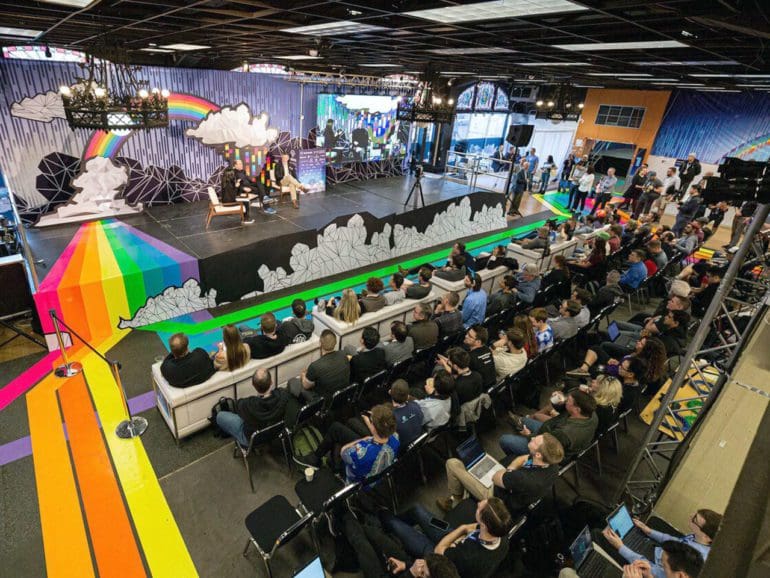For more than a week, thousands of crypto devs and eth fanatics poured into Denver for the latest ETHDenver conference.
Before the show even began across multiple floors of the ‘web3’ Sports Castle building, events, meetups, and parties spilled across the city.
By the time the doors opened to meet the line of excited crypto builders wrapped around the gothic deco building, LendIt’s co-founder and CEO Bo Brustkern reported it had felt like ETHDenver had been ongoing for weeks.
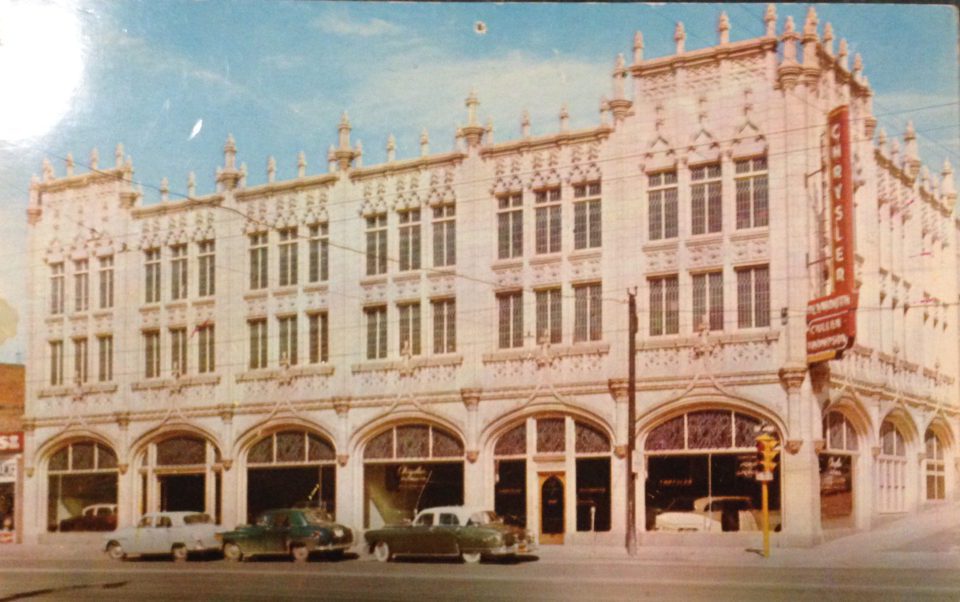
“Living in Denver was a hometown advantage. The run-up to the conference was interesting because a huge amount of momentum was going into it. The actual event was Friday, Saturday, Sunday; when I woke up on Friday and got the email from ETHDenver, it was day one, and I thought that was patently false. It is day seven for me, and I’m dying, drowning In information.”
Brustkern was there with a judge’s pass to help DAO Denver with its two-day track event featuring 80 speakers in the space. He said that the hackathon was already long underway when the doors opened.
More than a hundred groups were competing in Buidlweek for a total of $1.8M in prizes, grants, and bounties for L2 products. The community was out and swelling across the nearby streets, filling any rentable venue with crypto hipsters, working on projects, and forming groups just for the fun of building.
“There were a number of partner events that went on, I helped to manage. I was on the content team for an event called DAO Denver and which was fantastic; it was a two-day event with 80 speakers, and it was a real grassroots effort,” Brustkern said. “Then on Thursday, there was a day-zero type event for ETHDenver; it was in the Sports Castle, packed with people who were already in lines, snaking around the building.”
The temperatures outside ranged wildly but that did nothing to stem the crowds during the weekend, Brustkern said. Some waited in line for two hours to get into the fray: a total madhouse of chaotic collaboration.
The Denver Sports Castle is a spooky, 1920s deco-era car manufacturing showroom, later converted to Gart Brothers Sporting store. It now stands vacant as a rentable event space, filled with nooks and crannies perfect for hackers and laptops.
“It just felt like it was a massively expanding industry because everyone’s attitude was very non-competitive. It was very much ‘we’d love to help you understand what we do and see how we can work together,'” Brustkern said.
There were only a few wearing masks and there were a testing requirement days before the event, Brustkern said.
The crowd was primarily male, though diverse in background; those in suits stood out like a sore thumb, it was mostly hoodie-wearing devs.
The average age trended young, college kids, with some older folks in their 60s, but nearly all were building across the conference floors.
The Buidl contest
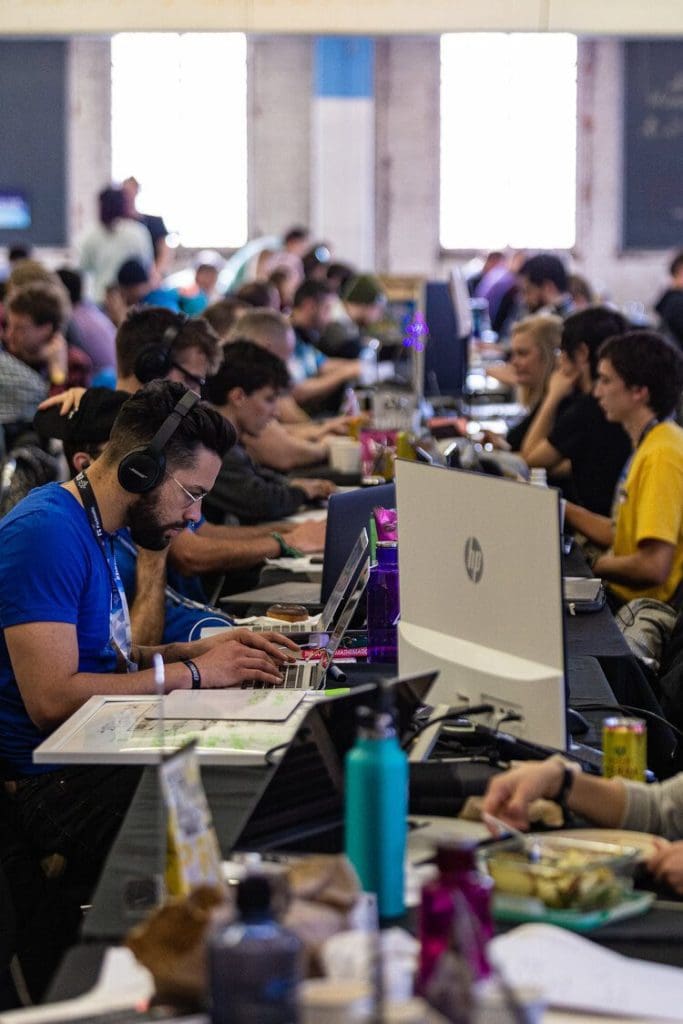
Brustkern served on a panel of three judges in the DAO track at the Buidling competition, the highlight event.
About 30 finalists from nearly 200 in the talent pool competed for product bounties. They were trying to build all business models like a start-up competition Brusktern said, but product-focused only. Teams were going after event-sponsored competitive tracks alongside sponsor bounties.
Some teams were formed during the event, as like-minded devs met while networking and began to build projects to win bounty awards set up by sponsors and member organizations.
“If you sponsored a certain level, you were then allowed to provide a bounty, part of the hackathon. They say, ‘I’m going to give a $20,000 bounty to a team that can best develop a blank,'” Brustkern said. “Then a lot of people in the crowd, as they’re watching content or taking a break from the content, they’re sitting in the dev tables, and they’re just building stuff, and they’re going after bounties, they’re forming up teams.”
The main event saw 172 project teams submitting five-minute pitching timeslots in front of judges, including Ethereum founder Vitalik Buterin.
The 26 finalists had just three minutes to pitch their products on the final day. Brustkern said it was alongside a makerspace for creatives and six presentation stages with live-streamed keynotes.
“Finalists got a three-minute pitch to present to Vitalik and some other judges for about $1.8 million in prizes,” Brustkern said. “At the end, out of all the competitors I saw, there was one that was just mediocre. There were four that were solid, and there was another handful that was really good.”
Like the rest of the attendees in the event, Buterin was approachable and could be seen working with dev teams and walking around the exhibition.
“You could go up and just have a conversation with them. So for a rock star, that was pretty cool,” Brustkern said.
Why this year was special
Even with the decline of prices in the eth ecosystem, Brustkern said this was an event that you couldn’t miss, a signal that the eth ecosystem and industry are exploding with activity. The conference itself, founded in 2018, had been delayed due to the pandemic and exploded back onto the scene.
“They’ve outgrown the venue, they not only had the Sports Castle, but they had the Ark hotel, the temple nightclub, and the place next to the temple nightclub. And then they went into this sofa manufacturing company,” Brustkern said. “They took over as much space in the city as they could within this little radius. So my guess is they’re going to be in the convention center next year and lose some of that cool vibe.”
There were stages, big and small, running content constantly, and it will be hard to recreate the hacker, creator-centric vibe, Brustkern said. So instead, ETHDenver featured a mix of settings and mediums brought a rough around the edges, web3 creative vibe.
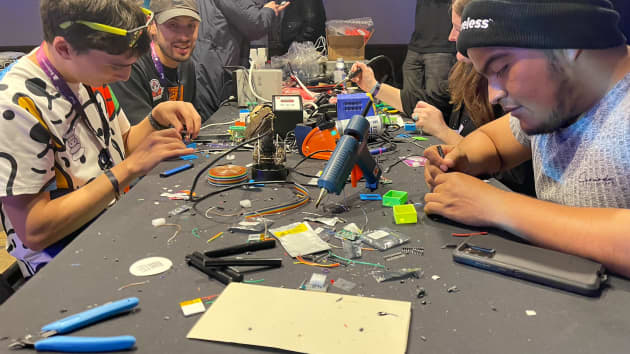
“You could sit down at a table and build a little thing with a solder gun and create a little like mini display for your NFTs using Arduino chips. They had these giant rooms with an LED wall that must have been 100 feet long to create a jaw-dropping visual experience with immersive sounds,” Brustkern said.
“They had all these goofy Zen rooms. It reflected the vibe of web3 appropriately. I cringe to think what it will look like if they go to a conference venue next year because this should always be in a weird warehouse somewhere.”
Colorado: a place for web3
Brustkern said a lot of the cooperative vibes could be because of Colorado. It does not tend to be a place you think of when you think ‘eth development,’ he said, but there is a robust community and support from the local government there.
Along with other mountain west states, a lot is being done to capture the web3 community as a real opportunity for growth, even in aspects of infrastructure for DAO organizations to function legally, through a re-tooling of the Co-Op law in the state.
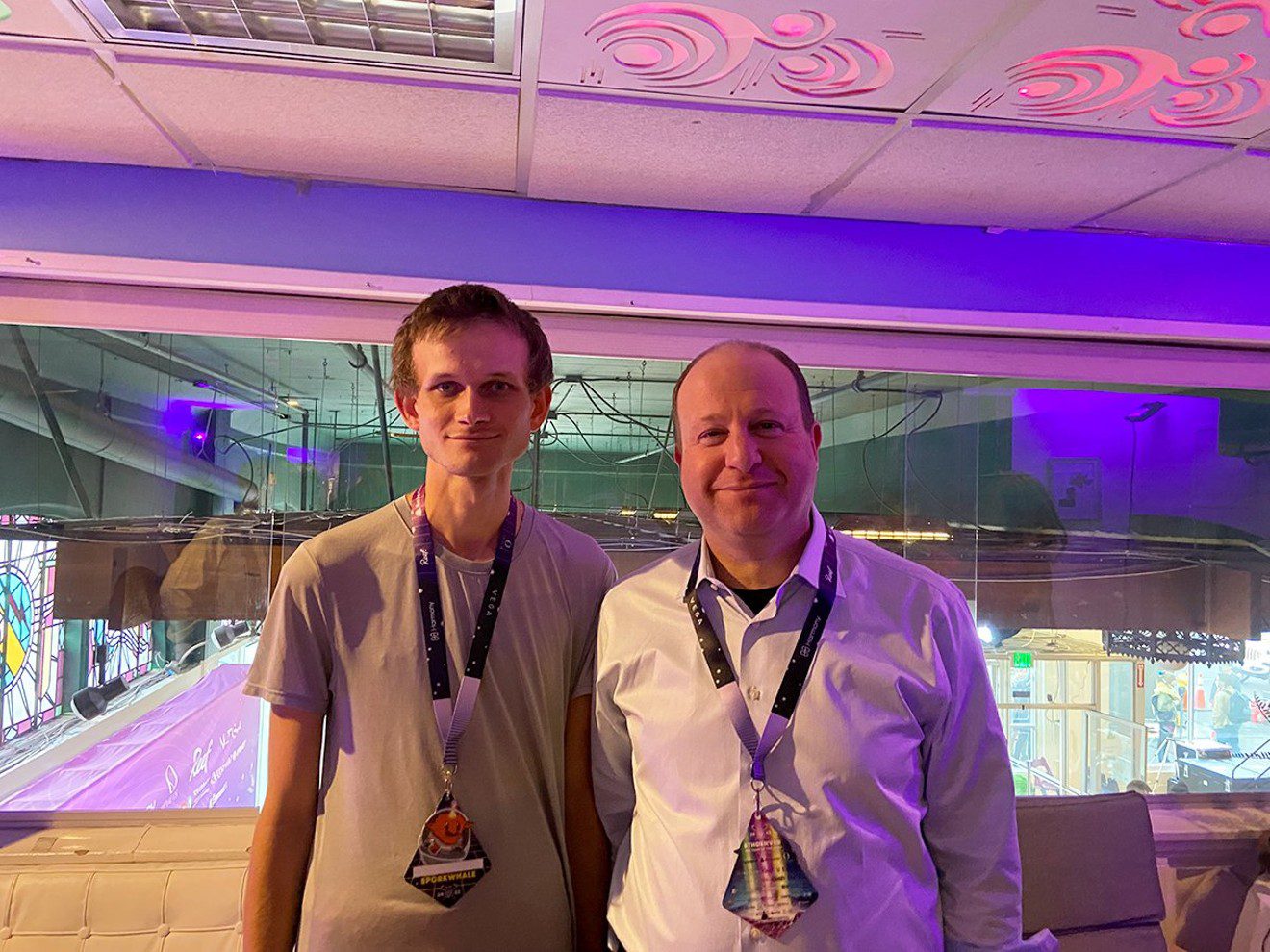
“[Govenor] Jared Polis spoke and represented Colorado really well. We had to wait in line to watch a regulator from the state of Colorado speak. There is a lot of work being done in the Mountain West, like in Wyoming. To make it a crypto-friendly region, the Colorado Co-Op law is now gaining some traction,” Brustkern said. “I’m so happy to see that being that this is my chosen residence, I want this to be a thriving crypto community. Because it will certainly help our city and our state.”
When Polis spoke, he boasted of the pro blockchain environment in Colorado, the first state in the US that hired a blockchain architect, he said.
Crypto devs in a crypto winter
ETHDenver came when crypto prices were flying low alongside the general market this year. However, Brustkern said that the builders in his city were still there in force because they were in it for the long haul. As we advance during a bear market, Brustkern said that the most challenging part now will be collecting the web3 community to build for what he sees as an inevitable merger of traditional, fintech, and crypto.
“With these two very different communities, we’re trying to bring together through our efforts. So banking and fintech were not that dissimilar, right, but they seemed entirely dissimilar back in 2010, 2012,’ but the crypto community is very different,” Brustkern said.
“It’s filled with grassroots libertarian hackers and iconoclasts, and they mean it. If we put a whole bunch of people on stage suited up, all polished and stuff, there’s nothing wrong with being polished, but there is a vibe that just does not mix.”
“In the inevitable race to develop web2 into web3, where every site is a layer two, the only way forward is to feature the crypto native,” Brustkern said.
Brustkern said he has made it his mission to embrace crypto and defi, to become more of a crypto native, and every company will have to learn how to launch web3 products if they want to succeed.
“That’s been my project since about August of last year, and I’m starting to feel more crypto native, and I think I’m starting to be accepted as more crypto native,” Burstkern said.
Duel natures of crypto devs: MetaMask vs. Tally
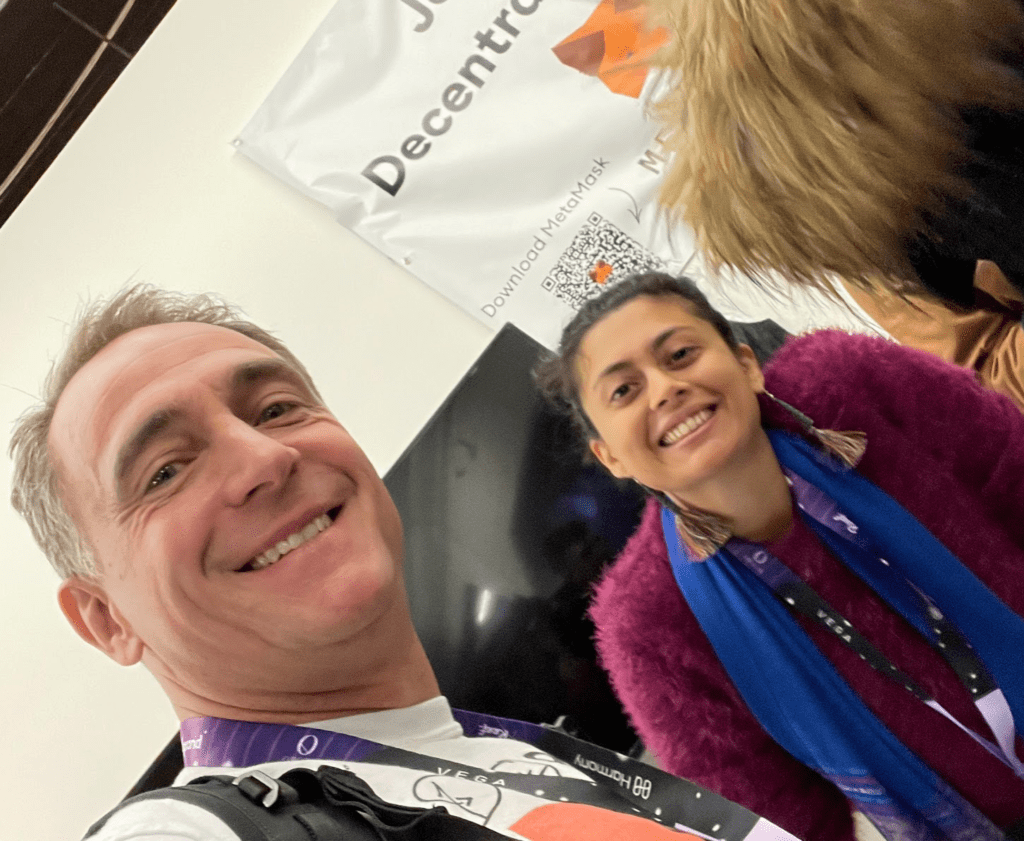
Web3 dev is not just about conflicts without the crypto community, but ETHDenver showed some conflicts from within.
Brustkern described the scene on the sponsored conference floor, where MetaMask, the Microsoft-like giant of web3 browser wallets, was two tables down from Tally, a decentralized browser wallet project that is more akin to an open-sourced fork of Linux.
While a traditional centralized company Concensys manages MetaMask, Tally is a DAO collective of users that pledge they will never remove users from accessing the wallet, while a private company may.
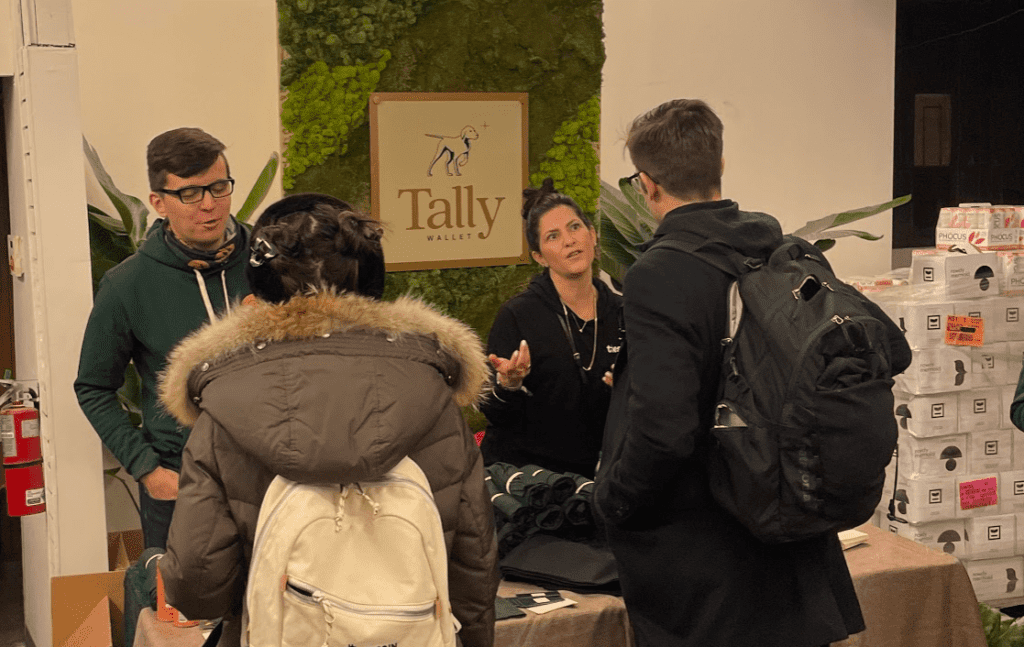
In their proximity, they showed a unique argument in the crypto community: the back and forth between centralization and decentralization.
Other layer ones, like Harmony, were also at the eth-focused dev conference. To Brustkern, what brought thousands of devs to Denver and the eth ecosystem, is the same that would bring DAO enthusiasts to Tally: though centralization is vital for parts of the ecosystem. MetaMask is the first choice for many.
“Two tables apart, it was MetaMask, which is, of course, the defining wallet, and then a couple of tables to the right was Tally.”


